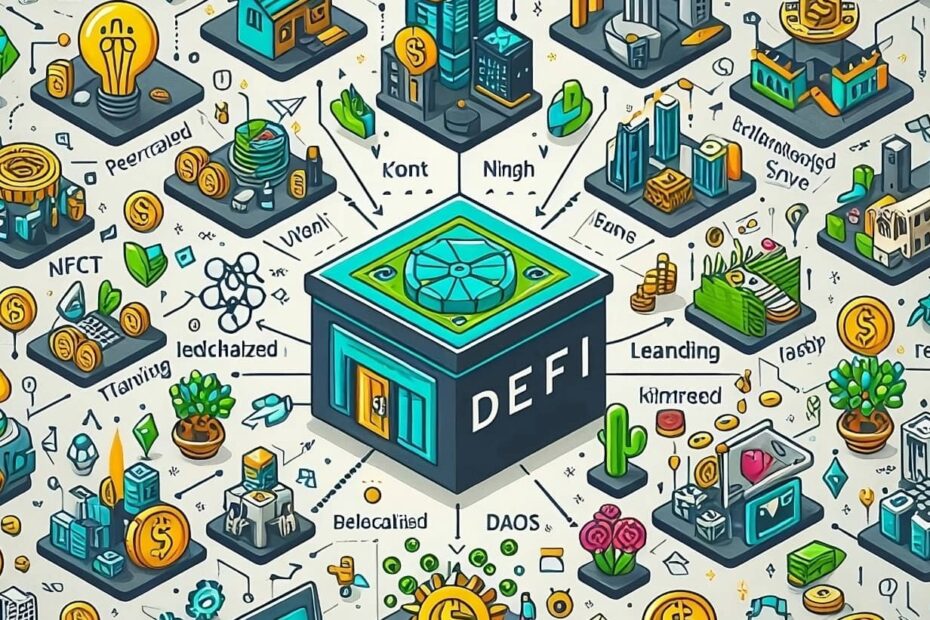Security in the DeFi sector is transforming. What are the key dangers and best practices to address them?
Exploring security at DeFi: dangers, audits, and best practices. The DeFi industry is evolving regarding interoperability and scalability by leaps and bounds. However, its security is an area in which it has not sufficiently matured.
In this article, we will explore this topic in-depth and mention the most common threats and possible solutions to this problem. According to Chainalysis, in 2023, the decentralized finance sector experienced a reduction in the number of funds received in wallets related to illicit activities. In 2022, this analytics platform detected an inflow of funds into “malicious” wallets worth $39.6 billion. While in 2023, the number reduced to $24.2 billion. The reduction is significant, but the figures are still daunting. These estimates only cover detected wallets. DeFi systems continue to experience failures, attacks, and huge losses. Below, we will discuss all of these and the solutions available.
The most frequent threats in decentralized finance
The main danger to DeFi protocols is code errors: they lead to malfunctions and vulnerabilities that allow hackers to steal funds. In addition, hackers look for flaws enabling system exploitation, resulting in massive losses. A common threat is vulnerabilities in smart contracts, which include exploiting inadequate access controls, exploiting overflow vulnerabilities, and many other flaws.
On the other hand, we have the exploitation of oracles, and since these applications connect data from the outside world with blockchain, attacks focus precisely on exploiting data sources. In this way, hackers introduce manipulated data. Another frequent case is flash loans that allow users to borrow large amounts of unsecured funds, used for manipulating prices and governance model exploitation to introduce malicious proposals through Sybil attacks or vote buying.
What practices offer security and protection to the DeFi sector?
In the face of these threats and many more, some practices can provide better strength to decentralized finance protocols:
- First, choose specialized auditors experienced in the sector. Audits are far from infallible but are the best resources to protect the protocols.
- Rigorous reviews of the protocol code bases and quality code are vital elements of security-oriented development. Quality and readable code allows contributors, auditors, and developers to detect flaws in the code and thus reduce the risk potential.
- Implementing developments and functions in test networks is not only a practice for large blockchains but should also be a practice for protocols. This way, you can identify vulnerabilities before implementation.
- Of course, there are automated monitoring tools to detect bugs, anomalies, and security breaches in real time. It is a good idea to invest in these tools.
- Finally, we will mention a transparent and robust community governance system emphasizing network security.
Technologies and advances that will transform blockchain security
While security problems in the DeFi sector continue, different technologies and opportunities are emerging that will transform this sector. We will mention a few of them below:
- First, Multisig wallets require multiple keys before authorizing a transaction. In other words, several agents will control the wallets. They will transform governance and the way DAOs manage their funds.
- Zero-knowledge proofs (ZKP) and the evolution of decentralized identification systems can transform the network. Above all, the fact that wallets can accumulate some reputation allows for detecting whether an agent is more secure or dangerous according to its track record.
- Finally, we will talk about modular chains such as Celestia. Such chains are a type of Blockchain architecture based on the separation of the functions of a network into different modules or layers. Each module is responsible for a specific task, such as storage, processing, or communication, and can be optimized independently. Modularization allows greater scalability, flexibility, and efficiency. It is a better protection against attacks.
As developers implement these advances, the DeFi sector will continue to face critical challenges affecting its integrity. So protect your funds in cold wallets and try to invest and interact with projects that follow the mentioned security measures.

